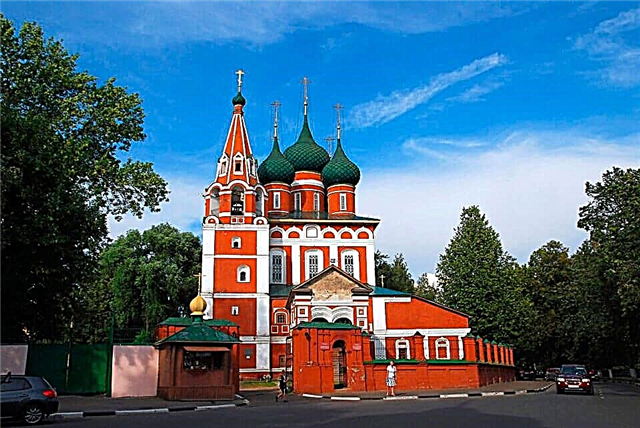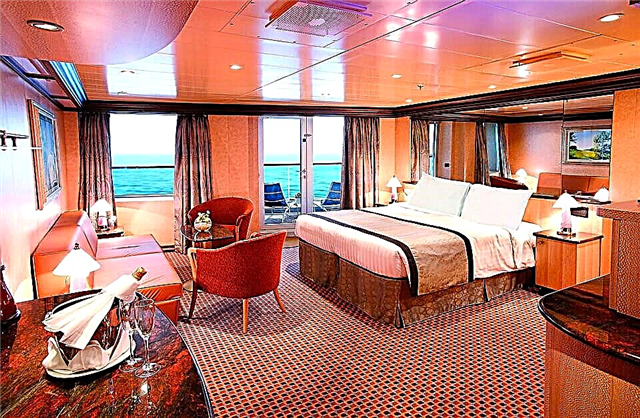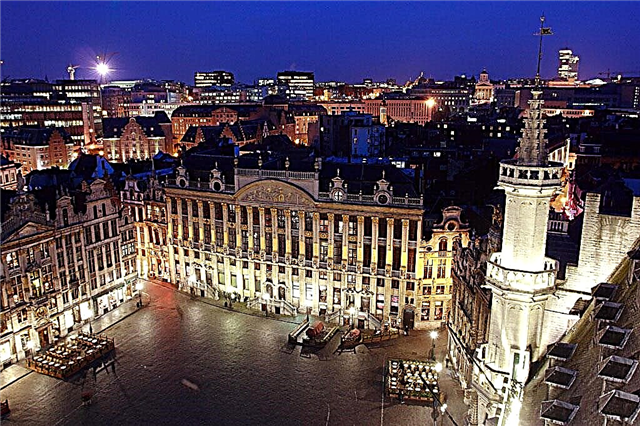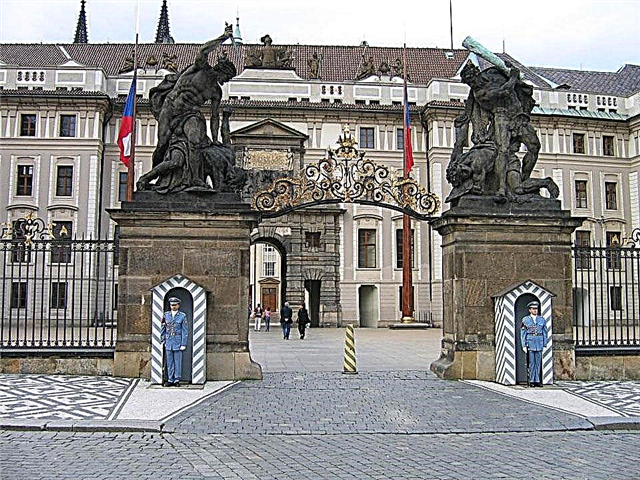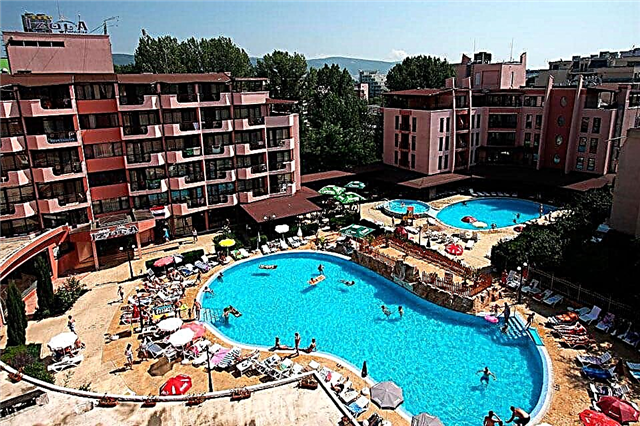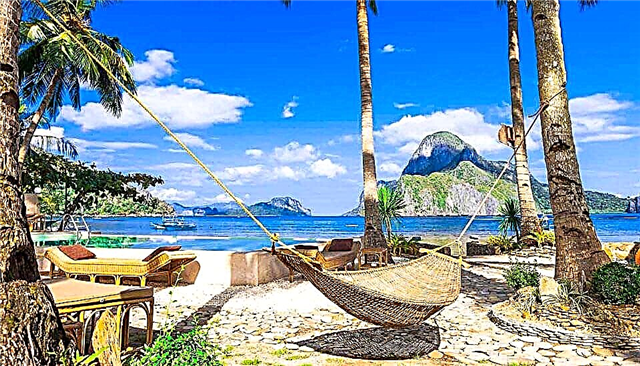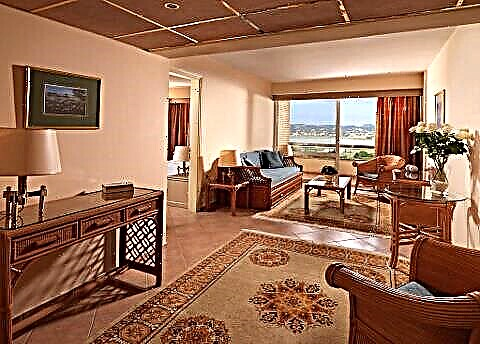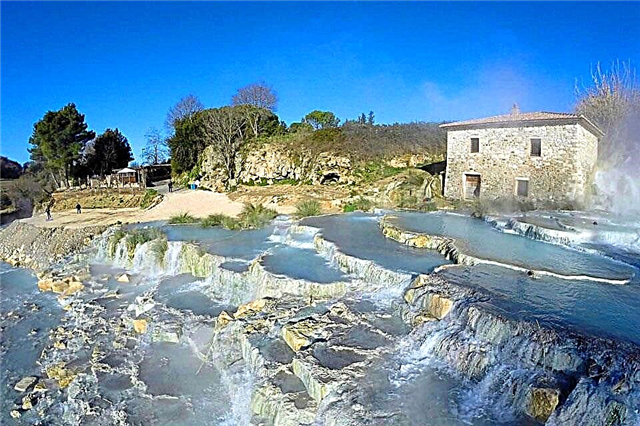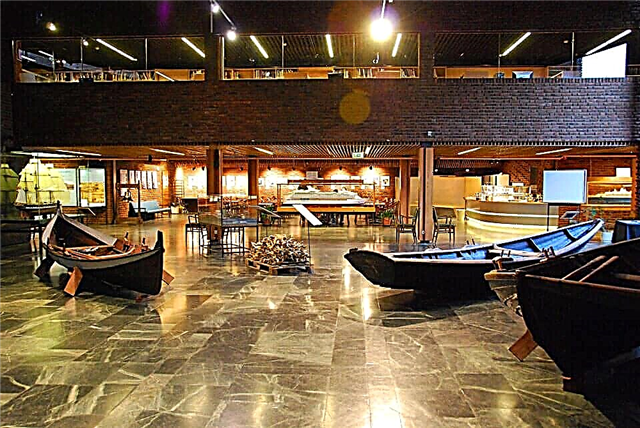The Scandinavian countries are becoming a popular destination for tourists. Norwegian culture, art, architecture, rich history, mentality and identity of the northern people are incredibly interesting and multifaceted. One day is not enough to see the main sights of Oslo. In the capital of the northern state, you can see exotic reptiles, see with your own eyes medieval buildings, visit cathedrals and churches of unique architecture, enjoy organ music, learn the secrets of northern navigation, visit a ski museum, get aesthetic pleasure from masterpieces of art in art galleries and much more. Anyone can choose how to spend time in the homeland of the Vikings, focusing on their preferences. To decide what to see and where to go on your own, check out the most popular and interesting places to visit.
Viking Ship Museum

The life of the Vikings, their traditions, customs, unique sea voyages are of interest to many generations of people living in different parts of the planet. You can touch their history, see the elements of their life in a unique museum located on the Bugle peninsula of Norway. Founded in 1926 on the basis of artifacts found during archaeological excavations on the coasts of the fjord. Three Viking ships, which have lain in the local climate for hundreds of years, were carefully lifted from the seabed, transported to a permanent storage site and represent an invaluable treasure of the country's historical past.
Among them are the Oseberg boat, the ships Gokstadsky, Tyunsky. Old oak ships are thousands of years old. According to the ancient traditions of the Vikings, they served as the last refuge for their masters, reflecting their status and wealth. The exhibits have many elements of ancient customs that tell about the life of the Vikings. Address: Huk Aveny 35. Entrance fee 60 CZK. A discount ticket costs 30 CZK. Opening hours from 9 to 18 hours. You can just get there by bus number 203, departing from the Roskilde stop.
Holmenkollen

A real holiday steeped in traditions, an unusual celebration begins in March during the Biathlon World Championships, winter sports competitions. This happens at a ski resort in Norway, which is based on the world's first ski jump Holmenkollen. It was built in 1892. The height of the springboard is 115 m. From any point you can see the path leading to the sky, soaring over the hills, green surroundings.
The sports facility is constantly being updated and modernized. Now it is the most modern springboard in the world. By the way, the first jump from the improved springboard was made on the opening day by Arne Westverd in the presence of members of the Royal Family and twenty thousand spectators. In the area of the ski jump there is an interesting ski museum, an observation deck that allows you to see the unusually beautiful city and its surroundings. The ski complex is located in the city. It is easy to get there by metro to the station of the same name.
Vigeland Sculpture Park

Numerous tourists and residents of the city come to this amazing place, located in the western part of the city (Fronger district) every day. Bronze, granite sculptures (there are 220 of them), born by the genius sculptor Gustav Vigeland in 1942, evoke philosophical thoughts and reflections. The compositions of the sculptural groups reflect different aspects of a person's relationship, a set of unexpected emotions. The original sculptures express the moment of the various activities of people: running, dancing, hugging.
The structure of the park includes five main compositions: central alley, Most, playground. fountain with a bowl "Burden of Life". Monolith, "Wheel of Life", the main entrance ensemble. The sculpture Monolith (14 m high) rises in the center of the park and is its main masterpiece. Human figures (121 units) strive to conquer the peak. They contain a realistic understanding of the meaninglessness of an insane thirst for success. The park is considered the largest known park in Norway. Even the sculptural groups, which are difficult to perceive, cause constant interest and make the park a popular attraction of the city.
Royal Palace

A beautiful golden beige palace appeared here as the residence of kings in the middle of the 9th century. Strength, constancy and eternity blows from the stone walls of the palace, where much reminds of a past life. Even the daily changing of the guard, the traditional raising of the gold standard during the presence of the king, have survived to this day. The neoclassical palace houses 173 rooms decorated with Norwegian art. On the ground floor is the huge hall of the Council of State, the Royal Court, and the parish church.
Any foreign delegation must visit the Royal Palace. Visitors await a welcome in amazing rooms decorated in the spirit of national romanticism, built on the use of images of natural landscapes. One gets the impression that the wait is taking place in a lively corner of Norway. The palace is surrounded by a park, the pride of which is the alley of sculptures. During the summer season, excursions are regularly held in the palace (ticket price 150 NOK). Palace address: Slottsplassen 1. Open from 10 am to 5 pm.
Town hall

A powerful building with two high towers welcomes guests of the city traveling by sea. A statue of St. Halvard (patron saint of Oslo), erected next to the New Town Hall, welcomes arriving guests. The long construction period (from 1914 to 1950) of the City Hall formed its final appearance in the form of a mixture of different architectural styles (romanticism, functionalism, neoclassicism). It is a huge, symmetrical, handcrafted red brick building. On the roof of one of the towers, there is a carillon of 49 separate bells that plays every hour. The city clock is located on the same tower.
The astronomical clock with the signs of the zodiac, traditional for the town halls, is located on the northern part (in the same place as the main entrance). It is accessed by original ramps decorated with wooden frescoes with paintings from Scandinavian myths. In the central hall of the town hall, meetings of the city council are held. Every year on December 10, the Nobel Peace Prize is awarded here. The interior decoration of the town hall was made by Norwegian artists. Visiting the Town Hall is possible on any day of the week from 9 am to 4 pm. The cost of the excursion to the bell tower is 3000 NOK, the Town Hall is 1500 NOK. Town Hall address: Fridtjof Nansens plass. Just get there by metro to Stortinget station, tram number 10, 12.
Opera theatre

The ultra-modern building, reminiscent of a snow-white iceberg that came to the shore of the Oslo Fjord, was built in 2007. As if an unknown force lifted him from the seabed, located in this place in ancient times. Archaeologists actively worked together with the builders, looking for the remains of sunken ships, artifacts associated with the life of the ancient population of Norway. The building is famous for its interesting architectural elements, design that uses a combination of glass, snow-white marble in unusual constructive forms. Among them is an unusual roof that descends to the surface of the water.
It is assembled from 36 thousand slabs of white stone. People calmly climb the perfect ramps to the highest point of the building. On summer days, Norwegians use the roof as a beach, observing an interesting sculpture located in the water and reacting with its movement to the slightest movement of the water. The stage is one of the most equipped opera elements in the world. The exterior and interior decoration of the building, its size gave reason to put it in the list of masterpieces along with the Sydney Opera. Address: Kirsten Flagstads plass, 1. Entrance to the lobby is organized free of charge from 11 to 23 hours. The cost of theater excursions is 100 NOK.
Houses of Parliament

In the central part of the main street of the city stands the building of the Norwegian Parliament (Storting). The modern image of the building was created in 1814, when the country's constitution was adopted. The building was designed by the architect Emilie Langlet. The sitting room of the parliament is designed as an amphitheater with a seat for the speaker in its center. The seats for the deputies are located in a circle from the center of the hall. From the balconies you can watch the progress of the process.
Separate places are allocated for the press, government. Numerous portraits of Norwegian rulers and prominent personalities are displayed in a special gallery. The building contains artistic values from 200 paintings, ceramics, interesting sculptures, 350 graphic works. The building has a splendid "June 7th Room", which is used to analyze issues on the agenda of the next parliamentary sessions. The building is located at Karl Johans Street, 22.
Akershus castle and fortress

The oldest architectural treasure (castle and fortress) rise above the Akers River, recalling the powerful defense of the ancient city. It was the strongest citadel of the Scandinavian countries, built of stone and brick. The new city of Christiania (in the future Oslo) was born from small settlements near the walls of the fortress at the end of the 13th century. In the beginning, the hill was adorned with the medieval Akershus castle, rebuilt in the 17th century in the Renaissance style. Later, the castle was surrounded by a powerful stone wall called a fortress.
Outside its walls there is an amazing mausoleum with sarcophagi of the kings of Norway, a church. They are open to tourists. Now in the halls of the castle there are museums of the Resistance, the Armed Forces of Norway. Here are the working premises of the headquarters of the Armed Forces of the country, the Ministry of Defense. Tourists can visit the halls, operating residences, former prison cells from May to October from 6 am to 9 pm. The ticket price is 65 CZK. For a family of 4 the ticket price is 160 CZK.
Museum "Kon-Tiki"

One of the most interesting museums in Norway, dedicated to the sea voyages of the famous traveler Thor Heyerdahl, is located on the Bygday peninsula. The conquest of the Pacific Ocean, the study of life in distant countries attracted this amazing person to the greatest secrets of the planet. He crossed the Pacific Ocean on the famous Kon-Tiki raft in 1947. It was made in Peru from balsa logs (9 pieces), using the old Polynesian method. Looking at this creation (as well as at the ships "Fatu-Khiva", "Ra" and "Ra II", "Tigris"), comparing them with the snow-white modern ships, you understand the courage, the skills of the team of Thur Heyerdahl.
A hall for exhibitions has been equipped, an original exposition of caves similar to those found on Easter Island, a cinema, a souvenir shop has been created. The exhibition contains documents, awards, memorial signs of Thor Heyerdahl. Among them is an Oscar statuette, which he received for a film about travels. Works daily throughout the year. It is easy to get there by ferry, bus number 30. The ticket price is 100 CZK for adults, 40 CZK for children.
Astrup Fearnley Museum of Contemporary Art

In 2012, a new building of a private museum appeared, created on the basis of a collection from the collection of a private person Hans Rasmus Astrup. The desire to make the family's rich heritage publicly available led to the opening of a private museum. It was a natural continuation of the family's deeds aimed at fame, created by charity, involving the population in the world of beauty. Founded in 1993. The architectural performance of the building is considered outstanding among the buildings of museums in the world.
A curved glass roof, wooden walls bordering the edge of the fjord dividing it in two, add extraordinary beauty to the new area of the city. It constantly hosts exhibitions of contemporary art. Equipped with a comfortable observation deck, an individual beach recreation area, a sculpture park. Address: Strandpromenaden, 2. Open daily from 11 am to 5 pm. Entrance without payment.
Fram Museum

The search for lands where no man's foot has stepped was carried out in all parts of our planet. The North Pole attracted many explorers with an inexplicable force. For the victory of the formidable ice, ships were created participating in dangerous voyages. Not all of them were successful. But the ship called "Frama" was the winner. Built in 1892, she is considered the most durable wooden ship in the world. The ship was manufactured under the guidance of the famous polar explorer Nansen with the participation of designer Colin Archer. The shape of the small ship followed the contours of an egg cut lengthwise.
The captains of the ship on three expeditions were Nansen, Amundsen. The wooden ship "Fram" (translated as "Forward") circled the globe twice, drifted in the ice for 1041 days and returned victorious. A separate museum building was built for him in 1936. Visitors can board the ship and inspect all of its parts. The expositions are dedicated to the history of polar expeditions. They contain stuffed penguins, polar bears, diaries, travel records. Open from 10 am to 5 pm, located at Bygdoynesveien, 36.
Nobel Peace Center

The building of the center is located near the Town Hall Square, overlooking the harbor. It houses an exhibition hall, a museum for displaying exhibits, historical artifacts related to the award of the Nobel Peace Prize. Organizational events are held for the meeting of the awarding committee, cultural events of the city. There is an honorary committee elected by the country's parliament for a six-year term. Its functions include the analysis of documents for prospective candidates for the Peace Prize (the list includes about 200 names, and 5 remain).
Of the remaining applicants, one is selected according to strictly worked out rules. The latest achievements of science have been introduced in the museum, storing the necessary information about the achievements of applicants. "Nobel Field" is equipped with tactile screens, touching which, it is easy to get any information. The Peace Center is located at 2 Brynjulf Bulls plass, open daily from 10 am to 6 pm. The ticket price is 100 CZK, children under 16 years old are admitted without payment.
Henie-Unstad Arts Center

The creation of the museum is associated with the name of the famous Norwegian figure skater Sonja Heni. With the financial support of a wealthy husband, Nels Unstad, a building was built in 1968 to house collections of works by artists of the 20th century. Initially, it contained 110 masterpieces created by Picasso, Matisse, Leger, and other famous names. In a separate room there was an exhibition of awards of the Olympic, world champion Sonia Henn. Now the building hosts concerts from works of ethnic music, theatrical performances, conferences, exhibitions.
The Center, donated to the people of Norway, is financed by the Unstad family charitable foundation. The founder's grave is located in front of the Arts Center. Sonya Henie has won the most victories throughout the development of figure skating. She created the famous show, Ice Celebration, which promotes figure skating. Address: Oslo, Sonja Henies vei, 31. Open every day except Monday from 11 am to 7 pm. The ticket price is 100 CZK.
Cathedral

An important sacred building of the city is located on Stortorvet Square, next to the famous Kard Yezanson alley. The building is considered the official church of the royal family (coronations, weddings, important celebrations take place there). The cathedral is under the protection of the King of Norway. The existing building is the third Cathedral (the two previous ones were destroyed by fires). It was built in 1697 in the Dutch Baroque architectural style. Inside the cruciform church there is an organ from 1720, a clock on a tower (1718), and a chapel.
The sacred objects of the cathedral are the silver sculpture "The Last Supper", ceiling and wall paintings made by famous masters.From the outside, a massive tower, decorated with a huge helmet and bronze doors, amazes the eye. The walls of the Cathedral are painted in traditional blue and yellow shades. You can see the Cathedral from Tuesday to Saturday without payment from 10 to 16 hours.
Tusenfried Amusement Park

This is the most extreme complex in Scandinavia. It is located 20 km from the city. Only on the “Speed Monster” attraction a person gets an adrenaline rush while riding at a speed of 90 km / h, getting 7 times into a state of zero gravity. Or feel the fear, excitement, joy of free flight on the Skycoaster. On the territory of the complex there is a children's railway, swimming pools, carousels, an autodrome, a water park with water slides, and much more. Adults, children, brave, cautious people find interest.
The amusement park is located at Tusen Fryd AS, N-1407, Vinterbro. The park opens at 10 o'clock in the morning, works until 19 o'clock in the evening. The ticket to the park is called All Inclusive.
Botanical Garden

A botanical garden is located in the center; its collection of plants exceeds 7,500 specimens. It was founded at the beginning of the 19th century, and since then the city authorities have been preserving the richest floristic collection. Strolling among the lush vegetation in this unique natural corner is loved not only by tourists, but also by the townspeople; you can often meet schoolchildren here on excursions. The vegetable oasis in the middle of the northern city is divided into thematic zones.
The Palm Pavilion and the Victoria Pavilion are planted with exotic vegetation. Some of the species that grow here are no longer found in nature. In the "Arboretum" (arboretum) zone, you can see the oldest chestnut tree, which is about 250 years old. The aromatic garden is filled with fragrant plants that bloom all year round and envelop visitors in incredible floral scents. In the systematic zone of the garden, plants are arranged according to families, species and genera. The garden of medicinal plants presents a variety of medicinal representatives of the flora.
These and other areas of the garden are accessible from May to September from 7 am to 9 pm. During the cold period, from October to April, from 7 am to 5 pm. On weekends, the botanical garden opens at 10 am.
Norwegian Museum of Cultural History

Here you will plunge into the atmosphere of the Northern European Middle Ages. The historical and cultural complex is located just 5 km from the center on the Bygdøy peninsula, where direct buses run regularly at short intervals. Here you get the feeling that the time machine took you several centuries back into the atmosphere of the distant past.
This open-air ethnographic complex spans 800 years of Norwegian history. Visitors here will see the ancient architecture of Scandinavia: 150 houses and churches were built between the 16th and 19th centuries. The fund of the ethno-complex has 160,000 exhibits. Folk musical instruments, church utensils, numerous household items, weapons, masterpieces of folk art, agricultural items - this is only a part of the ethnic groups presented here.
A special place is occupied by the collection of the Sami culture (an ancient people of Northern Europe). Exhibitions, holidays, cultural events are held here. The ethno-complex operates according to the following regime: Mon - Fri from 11 am to 3 pm; Sat - Sun from 11 am to 4 pm
Ekeberg Sculpture Park

The extravagant park covers 25 hectares. It was created by a private collector Christian Rignes, who believed that his masterpieces of art should be available to other art lovers. As a result, 31 sculptures are located in the park. They are arranged with great care and taste. Each occupies a special place allotted to her.
Ekeberg includes works by Salvador Dali, James Turrell, Mark Quinn and other sculptors known to lovers of this art form. The figures are made of different materials, created in different eras, but in the spacious Ekeberg they make up the overall composition of the park, despite their dissimilarity.
On the observation deck of the sculpture park, Edvard Munch painted the painting "The Scream". It was she who served as the prototype for the American film saga of the same name. The reproduction of The Scream at Ekeberg is very popular with visitors and is the most photographed exhibit in the park.
Ski Museum

Skiing is considered a national sport among Norwegians. For 4 thousand years, this method of movement on the snow has been practiced among the northern peoples. Therefore, it is not surprising that the Holmenkollen sports complex has a ski museum. It has been receiving visitors for almost 100 years and is regularly replenished with exhibits. Among them you can see unique finds, for example, rock paintings depicting skiers. But this is not the only interesting sight. Here are the longest, four-meter, skis in the world.
The royal family donated skis to the museum that once belonged to the royal family. And only here you can see with your own eyes a huge number of samples, from ancient snowshoes to modern plastic models. A huge thematic photo archive, instructions, scientific papers, books, magazines - and they are all devoted to one topic - skiing. The souvenir shop sells ski suits, accessories or educational literature.
Open to visitors every day. In the summer it works 9-20 hours, the rest of the time - 10-16 hours.
St. Olaf's cathedral

The church was built in the middle of the 19th century in honor of St. Olaf. The noble martyr king Olaf was the patron saint and baptist of Norway, the last saint common to the Eastern and Western Churches. Even his admirers in Northern Russia, but over time, the memory of St. Olaf undeservedly faded away.
Built in the Baroque style, the cathedral is famous for its rich interior decoration. The Norwegian Queen Josephine donated a copy of Raphael's "Sistine Madonna" to the church. In the middle of the 19th century, Pope Pius presented a tabernacle made of Italian marble. Parishioners and visitors to the cathedral celebrate the incredible beauty of the stained glass windows, which were created by the famous Norwegian artist Emmanuel Vigeland.
The excellent sounding of the organ creates an atmosphere of mystery; wind music concerts are often held here. And in combination with the architectural details of the church, the event leaves an exciting impression.
Munch Museum

Edvard Munch is a Norwegian expressionist who left a rich artistic legacy. Some connoisseurs of art consider him an artist of one masterpiece (the aforementioned painting "The Scream"), but to dispel this myth, it is enough to visit the artist's gallery. Its grand opening took place in 1963 and since then it has been considered one of the key attractions.
There are 28 thousand exhibits here. Among them are 1150 paintings by the artist. The rest of the legacy bequeathed by Munch to the city are posters, posters, sketches, personal belongings and 21 sculptures. An impressive collection of photographs is presented.
The cafe and souvenir shop operate as a cultural institution. Various thematic exhibitions of artists from all over the world are regularly held here. The Edvard Munch Gallery is open daily. In winter, from 10 am to 4 pm In the summer of 2020, the city authorities are planning to move the museum to the city center, where a cultural center will open, containing works of art and other renowned Norwegian artists.
Stake from Gul

Have you ever seen buildings that are more than eight hundred years old? Tourists have such an opportunity. The unique artifact is kept in the Norwegian Museum of Cultural History, where at the end of the 19th century it was transported to the church from the commune of Gul. It is one of the 28 surviving timber frame churches in Norway. Its history dates back to the 13th century, and over the course of eight centuries, the building has witnessed many significant historical events in Norway.
The headquarters, consisting of 6 tiers, was built in the 13th century. Paintings of the 17th century have been preserved inside the building.The time of construction is dated 1212 (according to the results of a dendrological study), and some details of the construction - 1157. The first mention of the church appeared at the beginning of the XIV century.
At the end of the 17th century, the building was reconstructed: windows were added. And two centuries later, the church was expanded, the gallery around the choir was dismantled. The secret of the stavirka's durability lies in the northern pine species, from which it was built, and special ancient technology.
Historical Museum

It is located in the most beautiful old building of the city. Thematically, it is divided into three parts, so we can say that it is a historical complex under one roof. On the ground floor, you can get acquainted with the ancient artifacts of the Norwegians. Here you can see jewelry, home, fur clothes, tools and other exhibits found in Norway from the early Stone Age to the Viking Age. Also on the ground floor there is an armory and a hall with religious objects.
You can learn the history of Norwegian banknotes on the second floor. Here are collected coins and banknotes from various materials that were used at different times in everyday life. Also in the collection of the coin room there is money from the cultures of the peoples of the world that have ended up on the territory of Norway, and even treasures.
The third floor is the ethnographic part of the museum. Egyptian mummies, colorful Mexican embroideries, Eskimo garments, shamanic tambourines and many other colorful items of the ethnographic collection that came to Norway with the help of travelers are carefully preserved and demonstrate how respectfully and with interest the Norwegians treat other cultures.
Open every day except Monday. In the summer, opening hours are from 10 am to 5 pm; from September 15 to May 14 - from 11 a.m. to 4 p.m.
Church of the Holy Trinity

The imposing Gothic building can accommodate up to eight hundred people. Therefore, it is considered one of the largest churches in Norway. It was built in the early 19th century by a German architect. Alexis de Châteauneuf erected an eight-aisled structure that resembles a Greek cross. A red brick façade with gray vaults and arches, an octahedral monumental dome set the imposing building apart from the rest. There are two towers at the edges, which make the architectural composition complete.
The main detail of the interior decoration of the church is the stained glass windows. The light shining through colored glass paints the room in different colors. Incredibly graceful performances of "Wheat Ears", "Tree of Life", "Pearl" make a deep impression on parishioners and tourists.
An incredible painting above the main altar depicts the sacrament of the baptism of Jesus. The columns of the building are decorated with flowers, and the original chandelier depicts confused trees, creating a special interior for the Lutheran church.
National Theater

Norway's largest theater center was built at the end of the 19th century. Initially, it staged plays exclusively in the native language. This was driven by the desire to secede from Sweden at the turn of the century and create a place for Norwegian playwrights and theater artists to work. During the 20th century, the theater experienced many crises, at different times it had its own ballet and orchestra.
The walls of the building are decorated with paintings by renowned Norwegian artists. It houses a unique collection of portraits of famous artists painted by the best painters. Also in the theater you can see busts of leading Norwegian masters. Björstierne Björnson and Henrik Ibsen are famous Norwegian writers, their sculptures stand in front of the theater building. The people called the theater "Ibsen's house" because a huge number of his dramatic works were staged here.
Museum of Science and Technology

If you think that science and technology is boring, difficult and clever, then you simply must visit this interesting place of the same name in the city. Here you can get acquainted with interactive, practical, interesting science without studying theory. For many years, unique pieces of equipment were collected by Philippe Pedersen, who in the first half of the 20th century organized an exhibition, after which the collection was replenished with many interesting exhibits donated by industrial enterprises and private owners.
Different thematic rooms will be interesting even for those who are familiar with technology and prefer fiction to scientific literature. The Electricity in the House exhibition brought together household electrical appliances from a light bulb to a coffee machine. In The Invisible World, you can see microorganisms in photos and in films. "Clean Energy" will tell interesting stories about its renewable sources - sun, water and air.
In the souvenir shop you can buy smart games, educational technical literature, models of inventions, books and other gadgets as a souvenir or as a gift.
Reptile park

You can come here with the whole family in order to get to know better the exotic representatives of the fauna. It will be interesting both for fans of reptiles and for those who dare to enter in order to tickle their nerves. The park is located under a roof and consists of rooms with aquariums of different sizes, equipped aviaries and terrariums, so even the most impressionable visitors can feel safe.
More than 100 species of animals live here: frightening pythons, familiar harmless snakes, frightening boas, all kinds of snakes, monitor lizards and other types of lizards, poisonous frogs of all kinds of colors, various spiders, among which there are poisonous ones - a tarantula and a deadly "black widow". Also in the reptile park lives a dwarf crocodile, many sea fish, monkeys, turtles, parrots.
On the second floor, you can chat with a boa constrictor, picking it up, and take a photo as a souvenir. He is not dangerous, but the impressions of meeting him will be remembered for a long time. On Tuesdays at 17.00, visitors can watch how the inhabitants are fed. The reptile park is open 9-18 hours daily.
Norwegian Maritime Museum

Many people, speaking of Norwegians, joke that each of them has at least one boat. Indeed, this northern country, washed by three seas, is inextricably linked with navigation. The Norwegian Maritime Museum operates on the Bigday peninsula. Here, visitors will learn the most interesting facts about fishing, its secrets and varieties - from the traditional, proven over the centuries, to a variety of modern methods. The guides will tell the story of a mysterious and no less dangerous whaling.
Surely you know little about the difficult work of the seismic fleet: these are ships on which exploration of oil and gas fields takes place. The guides will tell you amazing facts on this topic. Here, visitors will learn how to save a ship from the ice captivity, get acquainted with different types of building ship structures.
A hall is also allocated for paintings by Martinist artists of the 19th-20th centuries, depicting the mysterious elements. There is a swimming pool where those wishing to feel like captains can "take the helm" of radio-controlled models. It works according to two schedules: winter (from 10-15 h) and summer (from 10-18 h).
National Gallery

The main gallery of the capital, which opened back in 1837, contains not only exhibits of painting, but also samples of applied art and sculpture. The richest collection of works of art in Norway, created from the end of the 18th century, the period of the birth of romanticism, until the middle of the 20th century, when postmodernism was a key trend in painting, is carefully preserved here.
The painting The Scream, which made the Norwegian painter Edvard Munch famous, is presented here. It was stolen in 1994, but returned three months later. According to the official version, detectives found it, but the Norwegians say that the image is so frightening that the robbers themselves returned the canvas. The left wing of the gallery is famous for paintings by Renoir, Picasso, Van Gogh, Monet, El Greco and other world famous artists.
Our compatriots proudly visit the hall with medieval icons of Novgorod icon painters. Temporary exhibitions of contemporary artists are regularly held here, which will be of interest to connoisseurs of painting of our time.
Henrik Ibsen House Museum

Every Norwegian pronounces the name of the world famous playwright Henrik Ibsen with deep respect. He is one of the first writers of his time to touch upon the issue of women's emancipation. He laid the foundation for a new European theater, in his plays rethinking the problems of relations between women and men, brought the solution of philosophical questions to the theater stage and attached great importance to the theme of artistic creativity.
It is not surprising that the house-museum of such a significant person is open to visitors in the city. Here the playwright spent the last years of his life. The office where Ibsen wrote has remained intact. As if the writer had gone out for a while to take a break from work. The decor in the room creates the feeling that the objects around are still waiting for the owner to return.
Other rooms have been refurbished, but match exactly the interior style of the early 20th century. The bedroom is considered to be the most curious room: a writer died here in May 1906. The house-museum is definitely worth a visit for theater lovers and those who have not yet discovered the work of Mr. Ibsen. After the tour, you will certainly do it.

